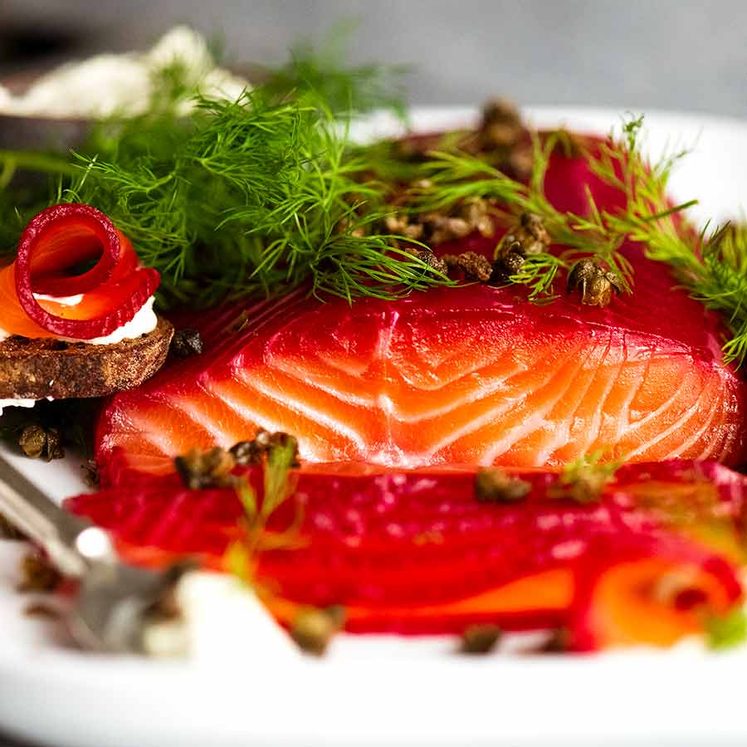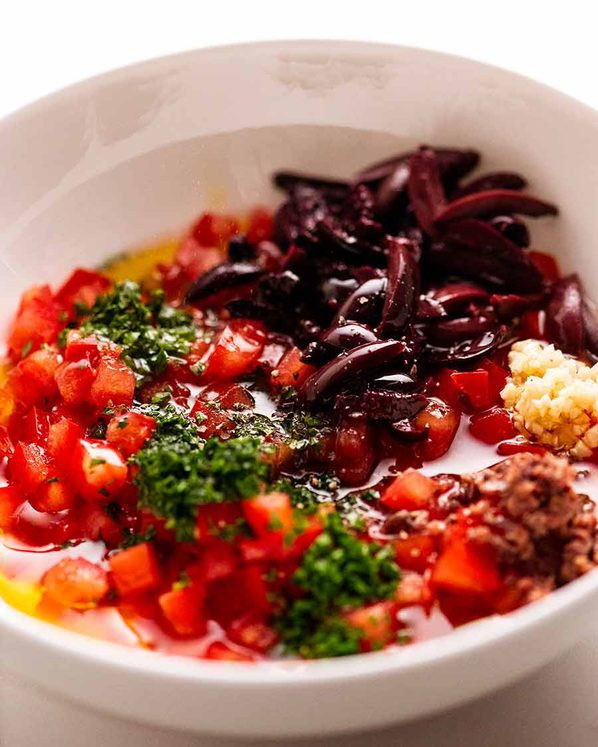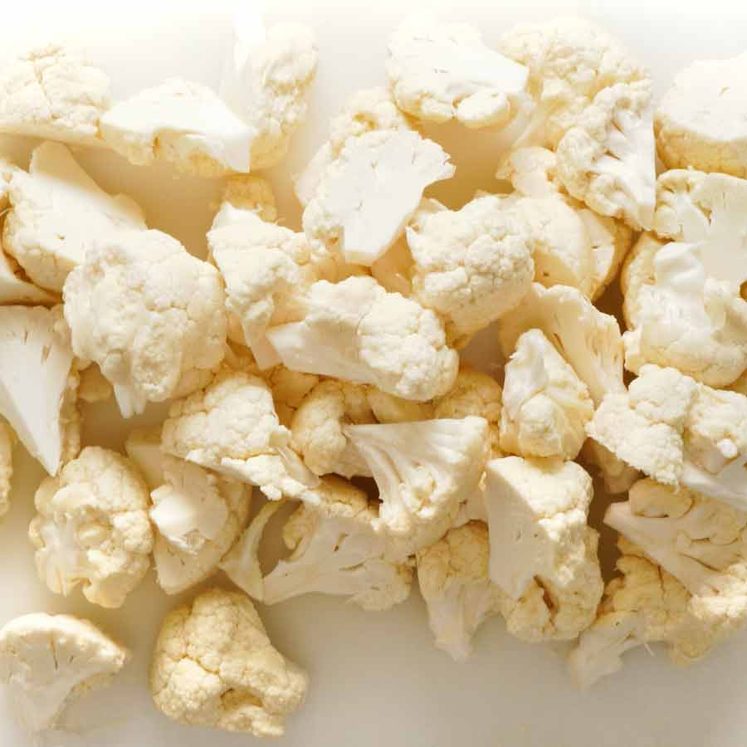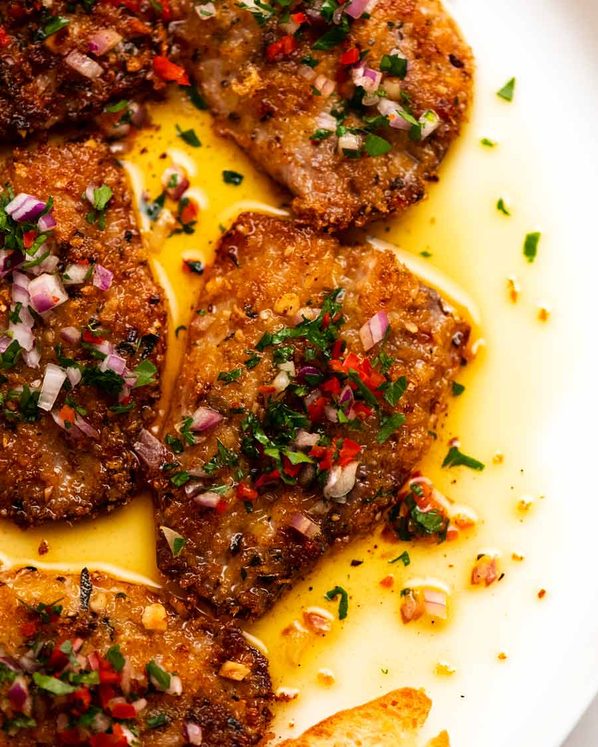Looking for a stunning new way to serve salmon for an occasion? Beetroot Cured Salmon, gently flavoured with spices and a little vodka or gin, is a sophisticated gourmet delight that’s incredibly easy to make at a fraction of the cost of store bought salmon gravlax!
This dish is a modern classic ideal for serving as canapés or an elegant starter, or just having around in the fridge so you can shave slices off to nibble. Lasts for days and days!
Start this recipe at least 2 days before serving, preferably 3 days.
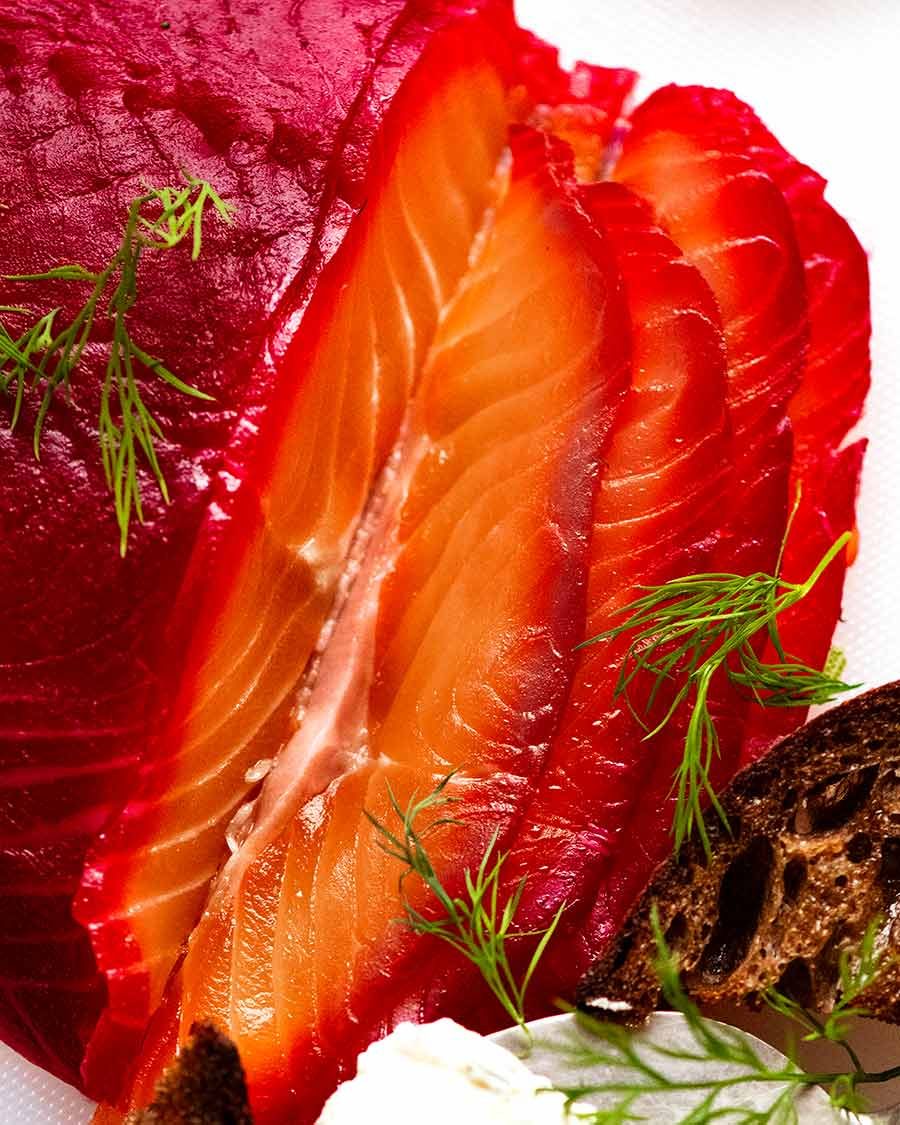
Too many cured salmon recipes are way too salty or way too sweet! But once you know the right proportions, it’s ridiculously simple to make and far cheaper than buying from gourmet stores.
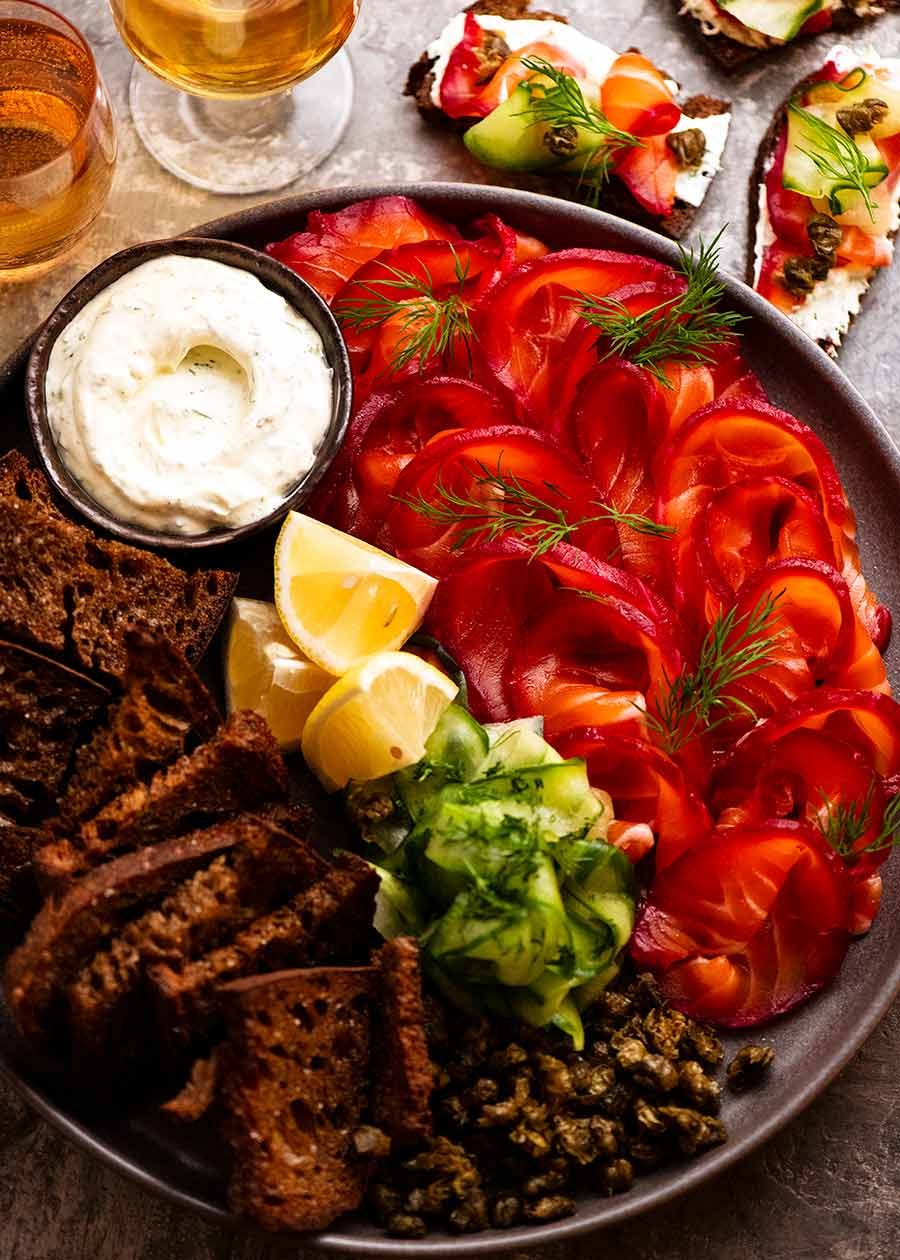
Beetroot-cured Salmon
Are you ready to impress the pants off your family and friends?? Deceptively easy, looks stunning and outrageously delicious to eat: Beetroot Cured Salmon!
What is Cured Salmon? And why cure at home??
Curing is an age-old means of preserving fish with salt. It also happens to transform the flavours and texture of the fish in delicious ways as the salt (as well as sometimes sugar) does its work.
Like other preservation methods such as drying, smoking, pickling and so on, we have less of a need to cure for preservation purposes today. However we still apply these methods to food to appreciate their delicious eating qualities!
Using beetroot in the curing process is an additional step you can do when curing fish that imparts a stunning maroon colour to the flesh surface and a subtle beetroot flavour! When sliced, the vivid contrast of colours between the beetroot-red and the orange salmon flesh is guaranteed to get everyone ooh-ing and ahh-ing!
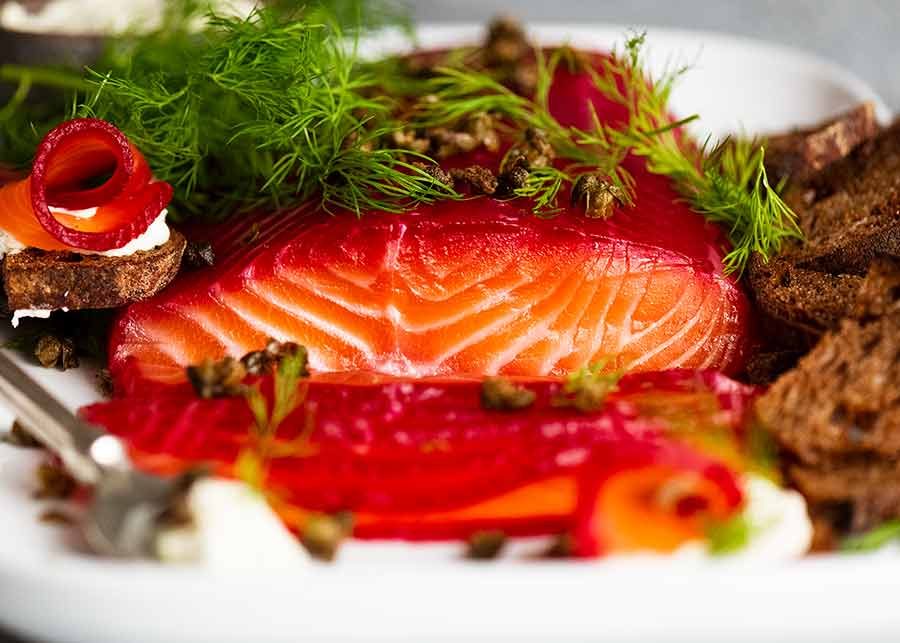
Two flavour options: Gin or Vodka
But why stop at the beetroot colouring? Curing is also a great vehicle for injecting even more flavours into the flesh. So today I’m offering two variations of the beetroot cure using alcohol and spice flavourings for an additional touch (which I believe in fact is fairly traditional in Scandinavia – feel free to comment below if you know!):
-
Gin, juniper and coriander seed ; or
-
Vodka, caraway and coriander seed.
Not only is home-cured salmon child’s play once you know the right proportion of salt, sugar and flavourings, but it’s also far cheaper than buying equivalent shop-bought versions. I don’t know about where you live, but here in Sydney, tiny packets of similar cured-and-flavoured salmon are marketed as gourmet and sold for eye-watering prices.
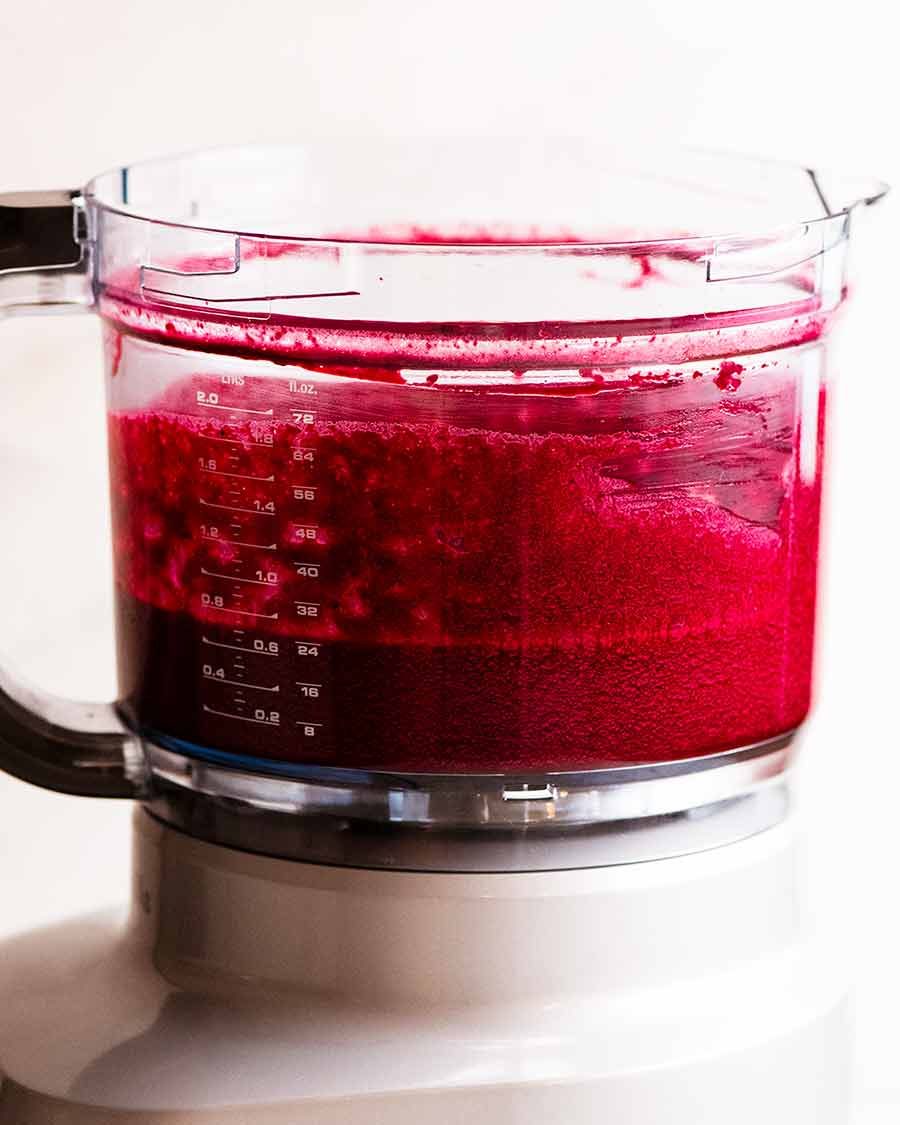
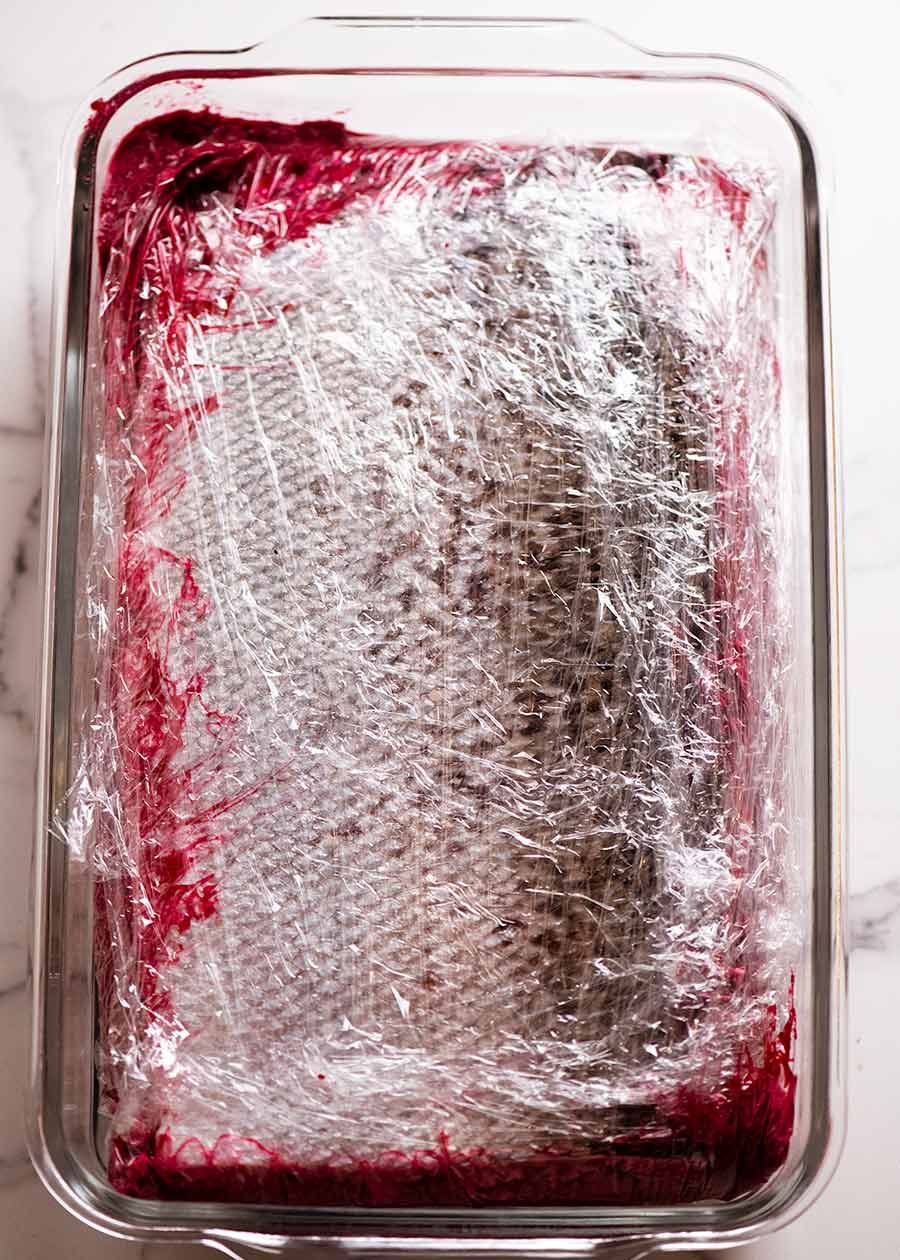
What does it mean to salt-cure salmon?
Curing refers to a method of preserving salmon using salt and sugar to draw moisture out of the salmon and salt the flesh. This old technique originates in the Nordic countries and northern parts of Europe, where salmon in the rivers and oceans is plentiful but preserving foods was historically also an essential way of life.
Curing extends the shelf life of raw salmon by depriving bacteria and other microorganisms of a cosy environment in which they can live and multiply easily. The process also alters the texture of the flesh, causing it to become firmer much like other cured meats (ham, salami etc).
Curing furthermore provides the opportunity to add flavour into the salmon. Classic flavourings include fresh dill (for Salmon Gravlax), and gin or vodka plus spices which is what I am sharing in today’s recipe.
“So is cured salmon raw?” Short answer: Yes. While the fish is technically raw (since it’s not cooked by heat), the fish is perfectly safe to eat, since the salt kills bacteria etc and inhibits their growth. Prosciutto, salami, and cold-smoked salmon are all examples of delicious foods that are cured but uncooked!
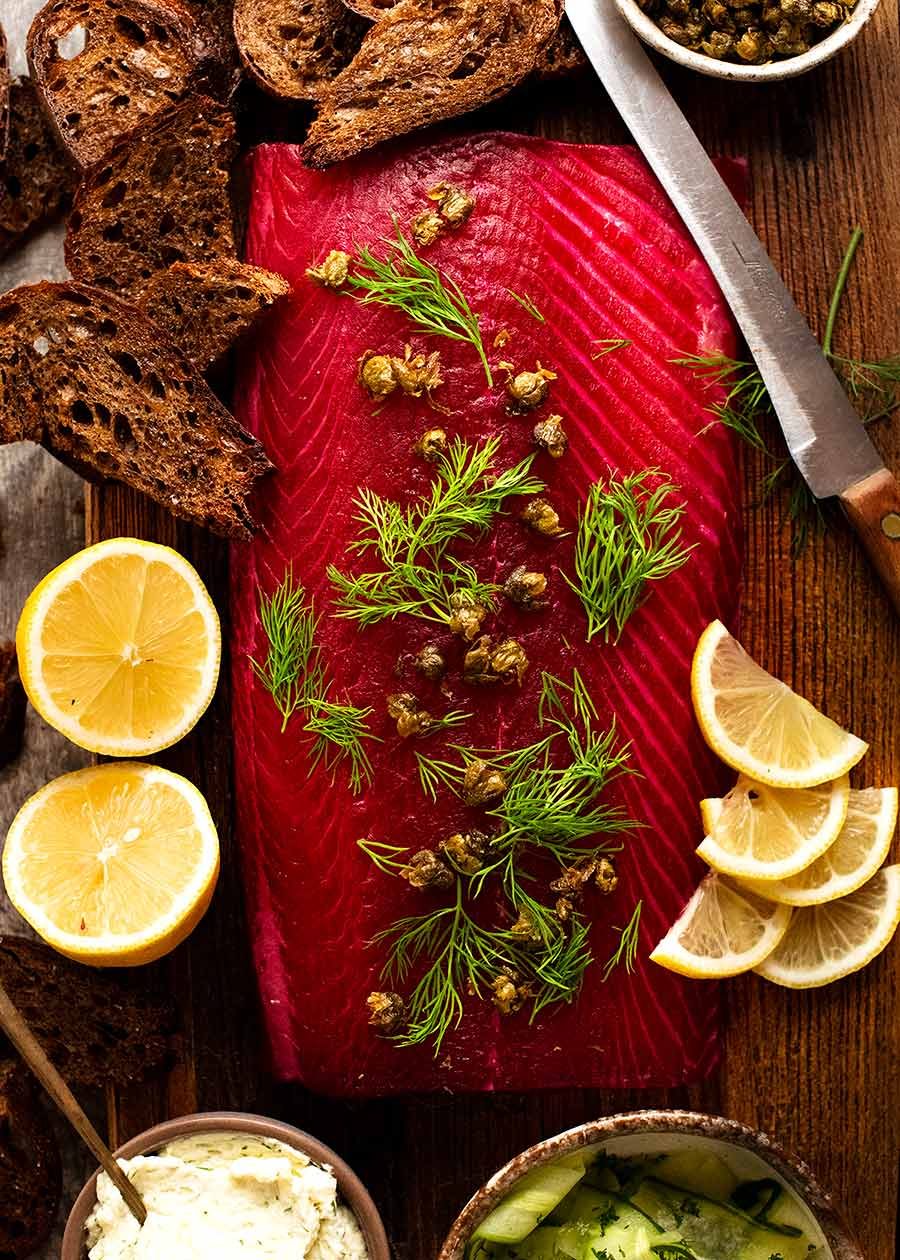
Ingredients for Cured Salmon
To make Beetroot-cured Salmon, you need: fresh salmon, sugar and salt (for curing), beetroot (for staining) and flavourings (gin or vodka + spices):
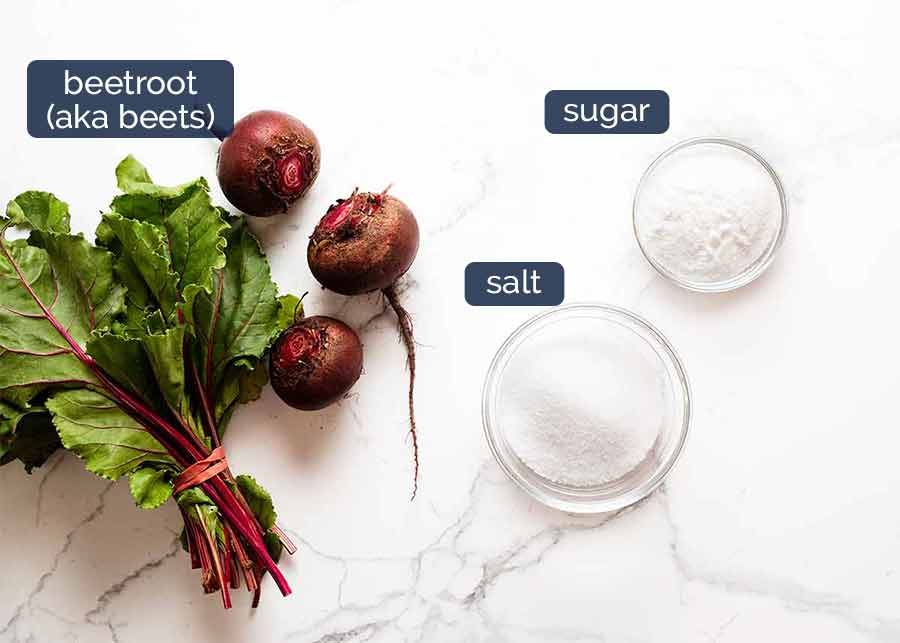
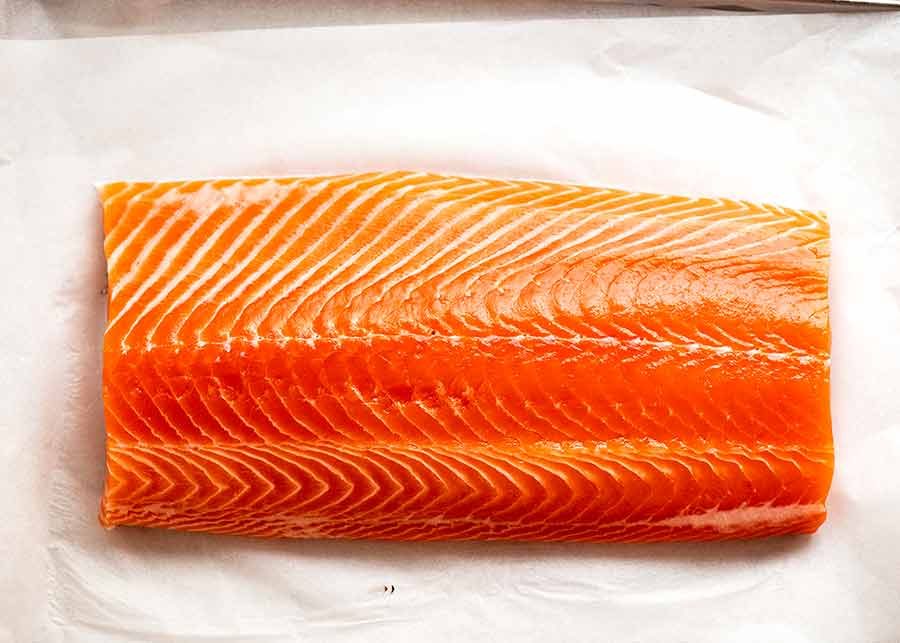
-
Fresh salmon – Ideally, sashimi-grade salmon is best. However it doesn’t need to be sashimi-grade (ie. fresh enough to eat uncured), because we’re going to cure it with enough salt to make sure it’s safe to eat. It does though still need to be very fresh! Check with your fish monger to ensure the fish is fresh enough to cure. But most importantly, check it yourself. If the salmon smells like the ocean and not “fishy”, and is firm to the touch it’s fresh enough. If it smells and looks funky, and the flesh is slimy, give it a miss….
Trimming salmon – The piece of salmon pictured above is neatly trimmed so it’s a nice even rectangle shape, courtesy of the fish shop. If you get a whole side of salmon that is not trimmed, the tail end of the salmon is thinner, the belly is thinner and the head part will be cut on an angle. For the most even curing and best presentation, it is best to trim the salmon so it’s an even thickness and shape, like pictured below. You will need to start with a 1.5kg / 3 lb whole side of salmon:
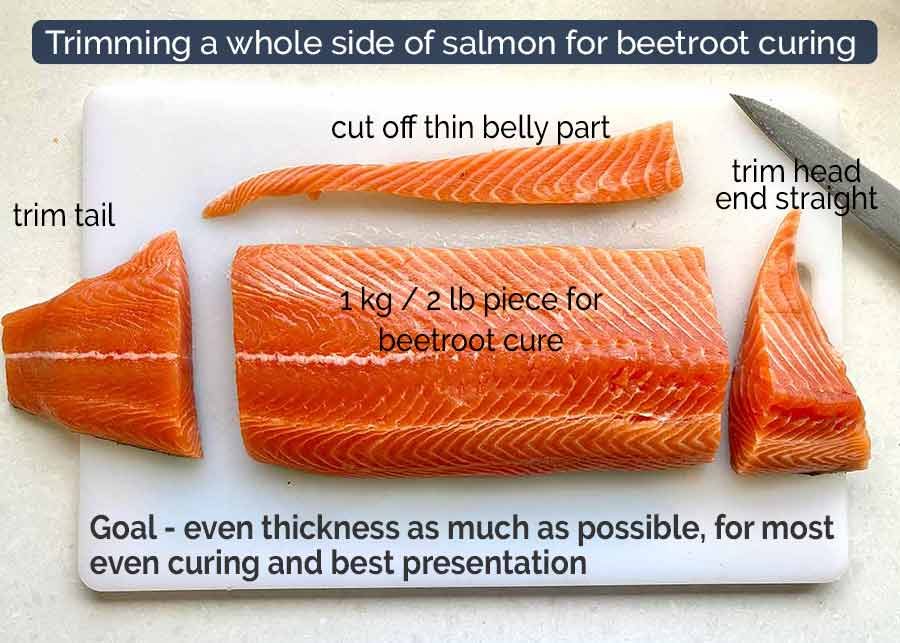
-
Sugar and salt – These are the essential ingredients that cure the salmon. Both draw liquid out of the fish to preserve it. Why sugar too? Because the amount of salt required to cure salmon properly makes it way too salty. So sugar is an excellent way to share the curing work, while also balancing the flavours so it’s not just salt. Sugar doesn’t make the salmon sweet-tasting at all. Most smoked salmon, for example, uses sugar as well as salt.;
-
Beetroot (aka beet) – This is what stains the outside of the salmon maroon, making for the striking appearance. It is mostly for aesthetics, any beetroot flavour is extremely subtle; and
-
Gin OR vodka plus spices (juniper or caraway, coriander and peppercorns)– These two spirits hailing from cold-weather countries famous for curing fish naturally work well here! I couldn’t decide between the two so I decided to provide both so you can choose. It really comes down to flavour preference – or drink preference! 😉 If you’re unsure, I’d opt for gin. The flavour is milder, smoother and a little more interesting. Also, you can get away with a more economical liquor (cheap vodka is pretty harsh!).
The alcohol is totally optional however, and does not affect the cure if you leave it out. It’s still absolutely delicious without! See recipes notes for details.
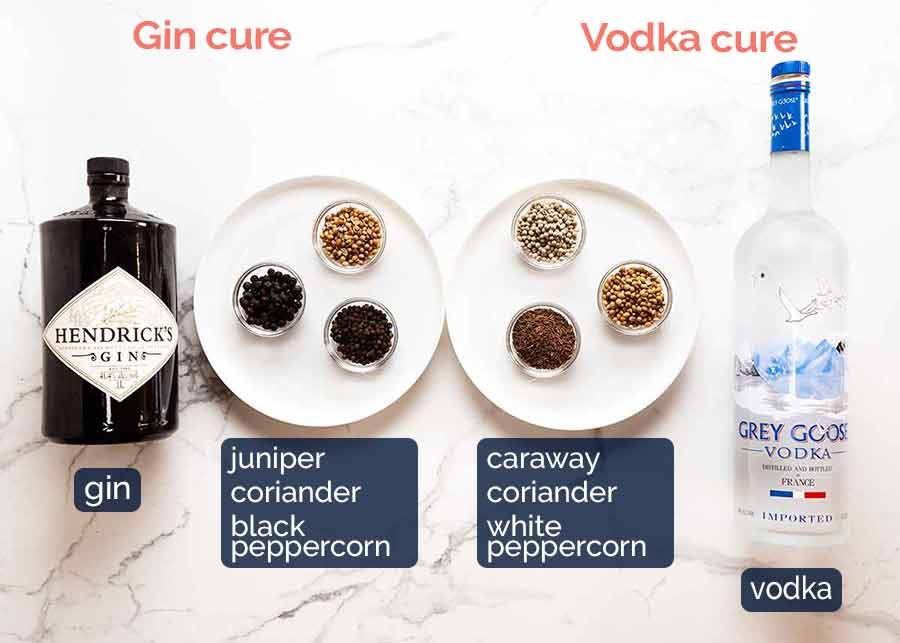
What you need for Gin-cured Salmon
-
Gin – If you’re happy to drink it, it’s good for curing, that’s my rule! Hendrick’s brand is a firm favourite in my house. Tanqueray is also a frequent lurker in my liquor cupboard. But less premium brands absolutely work just as well. The gin flavour is not in-your-face, and people who are not a fan of gin for drinking will still love this cured salmon because the other flavours in it (the salmon and spices) are also prominent;
-
Juniper and coriander – Classic spices that go with gin-cured fish that echo the key flavours of gin itself; and
-
Black peppercorn – Because pepper belongs in everything!
What you need for Vodka-cured Salmon
-
Vodka – As with gin, use your drinking vodka of choice. I find that I can taste the vodka slightly more than gin, simply because vodka has a slightly harsher edge to it. But again, as with the gin-cured version, I guarantee people who don’t actually enjoy drinking vodka will still devour the salmon because it’s a background rather than dominant flavour!;
-
Caraway and coriander seeds – Excellent complementary spices that go with vodka for the cured fish; and
-
White peppercorns.
The alcohol can be omitted!
For those of you wary about the use of alcohol in this cured salmon gravlax, note the following:
-
There’s only 80ml / 5 1/2 tbsp across 1 kg / 2 lb of salmon;
-
You can’t really taste it very much because of the other flavours are so prominent; and
-
You can actually skip the alcohol entirely!
How to make Beetroot-cured Salmon
I think you’re going to be amazed how easy this is! It really is mostly just about curing time, which involves nothing more than leaving it in your fridge.
How long it takes to cure salmon: 48 hours for the actual curing, plus a recommended extra 12 – 48 hours resting time to allow the salt to redistribute more evenly throughout the salmon.

-
Beetroot cure – Place the beetroot, sugar, salt plus the gin or vodka-flavouring ingredients in a food processor;
-
Blitz until quite smooth, like a smoothie. It should not be totally liquified, but you still want the beetroot to be blitzed until very fine;

-
Line container – Select a container that fits the salmon snugly, and ideally has a lid. If the container is too large, the beetroot mixture will spread too thinly and this might compromise how intensely the red colour stains the salmon and how well the curing mixture goes to work on the salmon.
(If you only have a large container, use scrunched up strips of foil under the cling wrap along the edges of the container to contain the surface area onto which the beetroot mixture spreads.)
Line the container with two big sheets of cling wrap, overlapping and perpendicular like a cross. Make sure the cling wrap sheets are large enough to fully enclose the salmon once wrapped. Then spread the beetroot mixture onto the cling wrap inside the container;
-
Place salmon on top of the beetroot mixture, flesh side down. Press down lightly to ensure the flesh is fully in contact with the beetroot mixture. Do not press down too hard however, to ensure you don’t force the beetroot mixture from underneath the salmon – otherwise it won’t stain red as evenly;

-
Cure 48 hours – Wrap salmon with the cling wrap, place lid on if you have one (else wrap tightly with more cling wrap) and refrigerate for 48 hours. There is no need to turn the salmon, as the beetroot will work its way over all the surfaces of the flesh. I told you, this is entirely hands off!!
This is the curing process. The salt and sugar will draw moisture out of the salmon, in turn preserving fish and extending its shelf life. The flesh of the salmon will be thus drier and firmer than it is when raw;
-
Unwrap the salmon. There will be more liquid than you started with. This is due to the aforementioned moisture drawn out of the salmon during the curing process;

-
Rinse the salmon under the tap to get rid of excess salt and beetroot mix;
-
Rest 12 – 24 hours (recommended) – Pat the salmon dry. If time permits, place the salmon in a clean container and leave it overnight in the fridge for at least 12 and preferably 24 hours. This allows the opportunity for what salt is now in the salmon to redistribute more evenly throughout the meat. If you serve the salmon straight after removing it from the cure, you will find that the surface is saltier than the middle.
While this step is recommended, it’s not essential! It’s still wonderful eaten straight away. Since we serve it sliced thinly and usually draped on to bread with garnishes, most people don’t even notice that it’s saltier on the outside. It’s just for perfectionists like me who want to achieve the best result, given the time! 😂
And now for the best part: presenting the salmon! And of course basking in all those praises you are about to be lavished with!! 😉
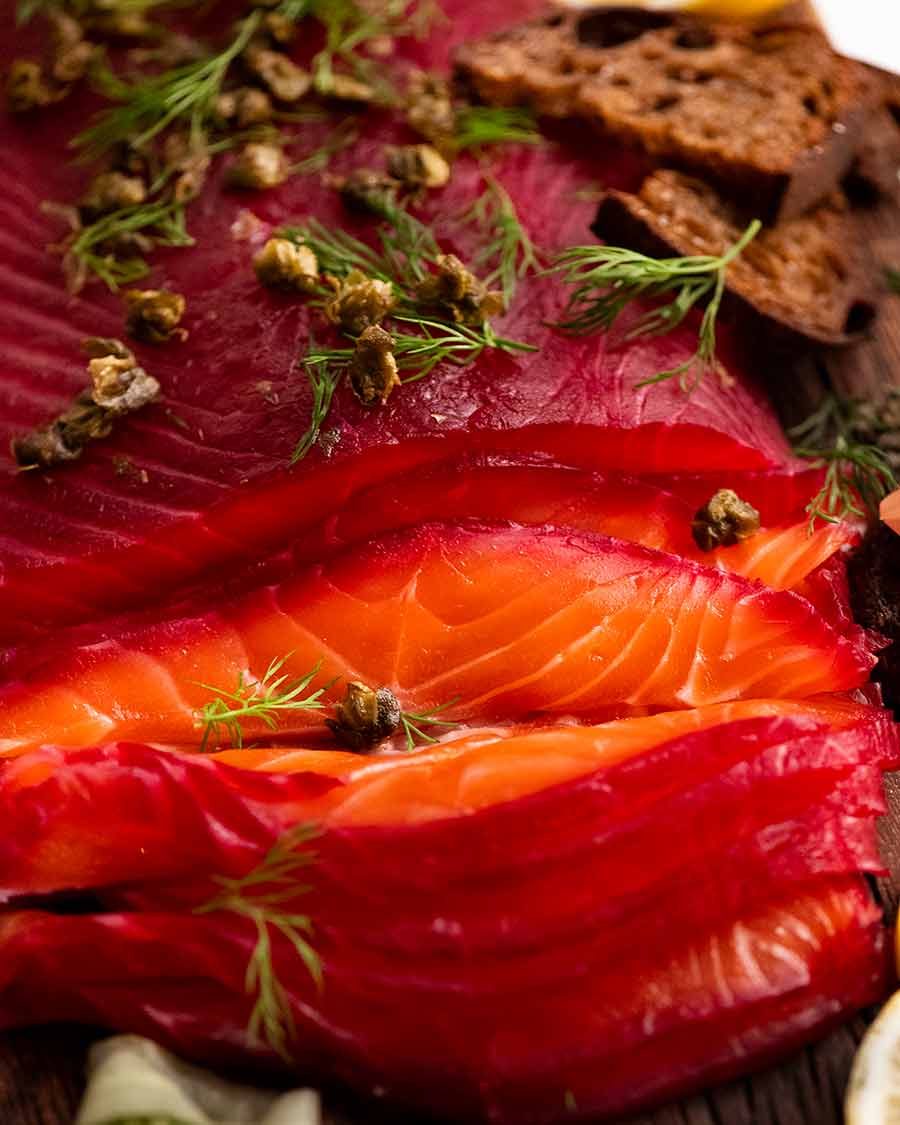
How to serve Beetroot-cured Salmon
The whole point (ok, MOST of the point!) of using a beetroot cure for the salmon is so it looks STUNNING when it’s presented.
So, let’s talk about serving it up, and all the bells and whistles we are going to add to make this a stunning platter to impress the pants off your family and friends!
-
Horseradish cream sauce – For serving. Horseradish is a classic accompaniment for cured salmon. Spiky, fresh and creamy, this sauce is made with fresh horseradish. Unfortunately it can be irritatingly hard to find here in Australia. So don’t fret if you can’t source fresh horseradish. You can just serve plain sour cream instead. (I’d recommend plain sour cream over trying to use jarred horseradish to make the sauce, as the stuff is weirdly sour and lacks the punch of fresh horseradish – it’s not worth it);
-
Crisp toasted bread – I like to use a rye bread which is another classic combination with cured salmon. Cut them small into bite size pieces;
-
Crispy fried capers – You could use just plain capers, straight out of the jar. But why not fry them up in a little oil for a some texture??
-
Cucumber ribbons, lightly pickled – You won’t see these in the video because I ran out of cucumber, but you do see them in the photos! Use a potato peeler to make long ribbons, then toss in a simple dressing of salt and cider vinegar to make a quick pickled cucumber. The freshness of the cucumber combined with the zing from vinegar goes really well with the rich oily salmon flesh;
-
Fresh dill sprigs – Of course you saw this coming! What is salmon without some dill?
-
Lemon slices – For another splash of colour and squeezing over your salmon to taste.
Pile it all up on a platter, and here is what you get:
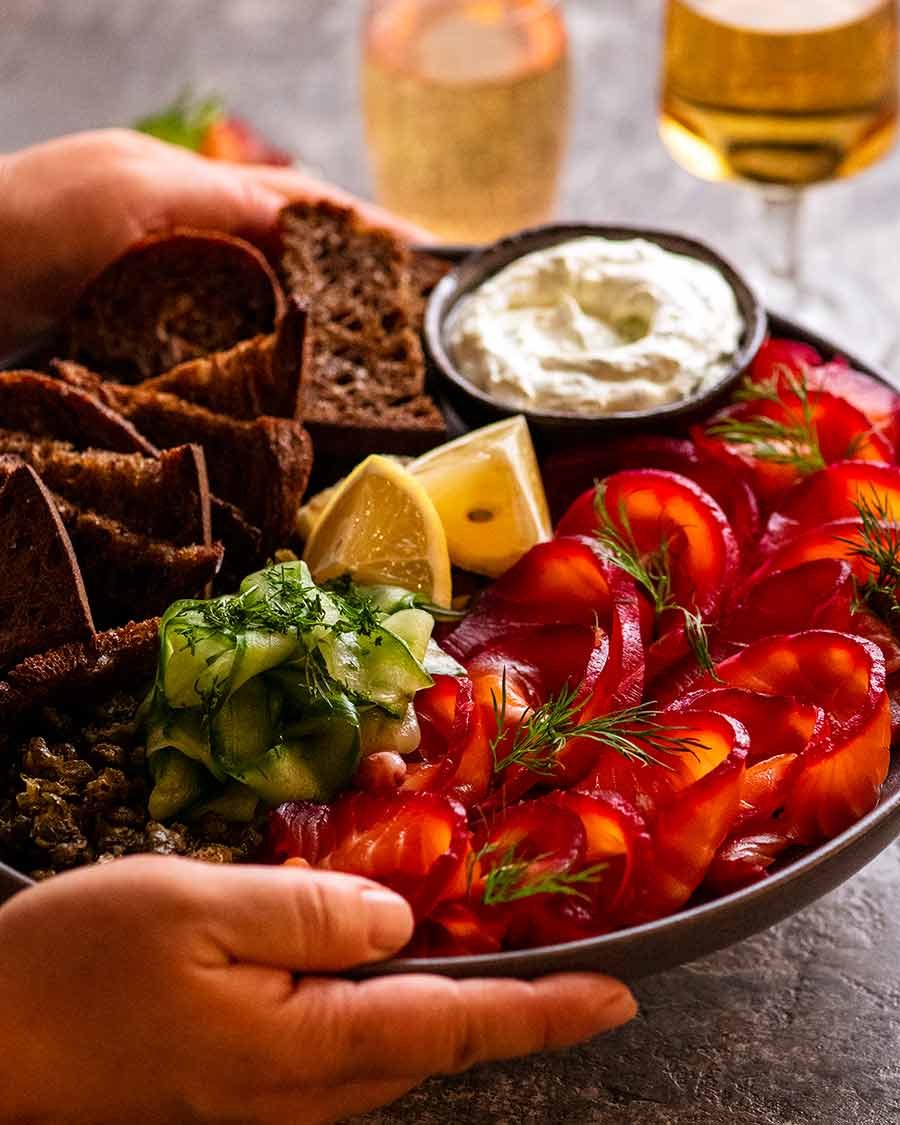
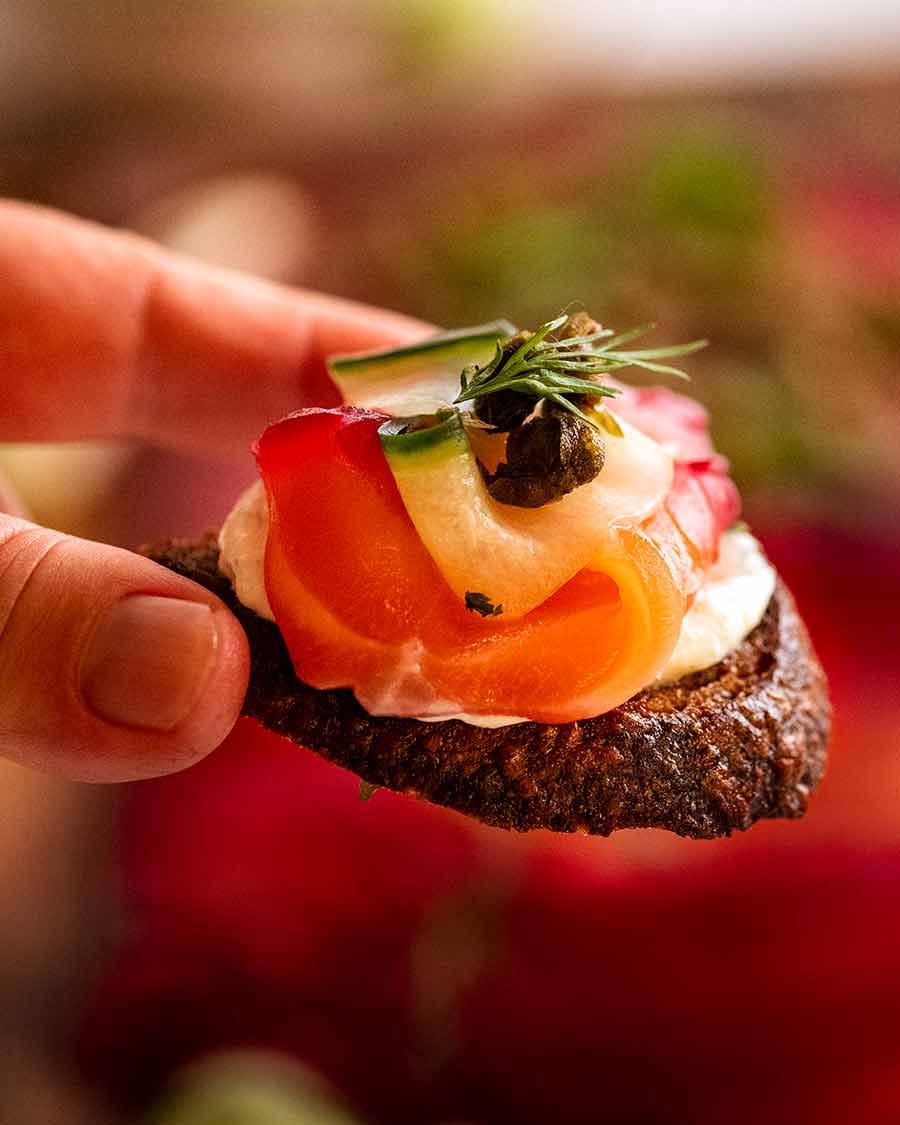
You think that looks good? Just wait until you taste it!!! – Nagi x
Watch how to make it
Hungry for more? Subscribe to my newsletter and follow along on Facebook, Pinterest and Instagram for all of the latest updates.
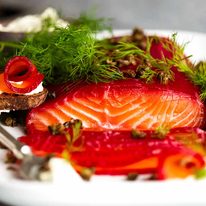
Beetroot Cured Salmon (Gin or Vodka, Gravlax)
#wprm-recipe-rating-0 .wprm-rating-star.wprm-rating-star-full svg * { fill: #343434; }#wprm-recipe-rating-0 .wprm-rating-star.wprm-rating-star-33 svg * { fill: url(#wprm-recipe-rating-0-33); }#wprm-recipe-rating-0 .wprm-rating-star.wprm-rating-star-50 svg * { fill: url(#wprm-recipe-rating-0-50); }#wprm-recipe-rating-0 .wprm-rating-star.wprm-rating-star-66 svg * { fill: url(#wprm-recipe-rating-0-66); }linearGradient#wprm-recipe-rating-0-33 stop { stop-color: #343434; }linearGradient#wprm-recipe-rating-0-50 stop { stop-color: #343434; }linearGradient#wprm-recipe-rating-0-66 stop { stop-color: #343434; }
Ingredients
Cured Salmon – Base:
- 1kg/ 2 lbsingle piece of fresh salmon, skin on (even thickness, already trimmed like this, or 1.5kg/3lb untrimmed, Note 1)
- 400g/ 14 ozbeetroot/beet(raw), peeled and diced in 1cm / 0.5″ cubes (500g/1 lb weight pre-peeling)
- 1cupcooking salt / kosher salt (NOT iodised and NOT table salt, Note 2)
- 2/3cupwhite sugar
Vodka cure flavourings (Option 1):
- 4tspcaraway seeds, whole
- 4tspwhite peppercorn, whole
- 4tspcoriander seeds, whole
- 5 1/2tbspvodka(OK to omit, Note 5)
Gin Cure Flavourings (Option 2):
- 4tspblack peppercorns, whole
- 4tspjuniper berries, whole
- 4tspcoriander seeds, whole
- 5 1/2tbspgin(OK to omit, Note 5)
Horseradish cream (for serving, Note 6 options):
- 1cupsour cream
- 3tbsphorseradish (fresh), finely grated (Note 6)
- 1/4tspsalt
- 1/4tsplemon zest
- 1tspchopped dill
Cucumber Ribbons, lightly pickled
- 2cucumbers(Lebanese not the long English/Telegraph ones)
- 2tbspred or white wine vinegar
- 1/4tspsalt
- 2tspdill, roughly chopped
For serving:
- Dark rye bread, thinly sliced 3mm / ⅛ ” (or crackers or other thinly sliced bread)
- 1/3cupcapers(some for garnish, some for assembling bites)
- 1/4cupoil(vegetable, canola)
- Fresh dill sprigs and lemon wedges or slices
Instructions
-
Make beetroot cure: Place the beetroot, sugar, salt plus the gin cure OR vodka cure ingredients in a food processor. Blitz until pureed like a smoothie – about 15 seconds on high, scraping down the sides as needed.
-
Line container: Use a container into which the salmon fits snugly, but flat (Note 3). Line with two large pieces of cling wrap, overlapping one horizontally and one vertically, like a cross (so it will wrap salmon completely).
-
Place salmon in beetroot: Spread beetroot mixture on the cling wrap inside the container. Lay salmon on top, flesh side down. Press down lightly but not too firm – flesh should be fully in contact with beetroot, not base of container.
-
48-hour cure: Wrap up securely with the cling wrap, cover with lid (or seal container with more cling wrap). Refrigerate 48 hours (do not turn).
-
Rinse: Unwrap salmon, rinse off beetroot mixture, then pat dry.
-
Recommended – rest overnight: If time permits, place washed and dried salmon in an airtight container and refrigerate overnight. This allows the salt to redistribute more evenly throughout the salmon. (Note 4)
Serving:
-
Horseradish cream: Mix ingredients together until smooth.
-
Cucumber Ribbons: Use a potato peeler to make long thing ribbons lengthwise down the cucumber. Toss with vinegar and salt, set aside for 10 minutes. Drain liquid, toss with dill, transfer to serving dish.
-
Fried crispy capers: Heat oil in a small pan to 190°C/375°F. Fry capers for 30 sec/1 min until crisp. Drain on paper towels and cool.
-
Crispy bread: Brush bread lightly on each side with olive oil, then bake in a 180°C/350°F oven for 8 minutes, turning halfway, until crisp.
-
Plating: Place uncut salmon on a serving platter (one you can cut on). Scatter salmon with crispy capers and fresh dill. Place crispy bread and horseradish cream on the side, along with fresh lemon if using.
-
To serve: Cut thin slices down to the skin (but not through it). Pivot the knife blade so it’s almost parallel to the skin and cut the each slice carefully away from the skin (you cannot eat the skin). Smear crispy bread with horseradish cream, top with salmon, a few capers, and sprig of fresh dill. Devour!
Recipe Notes:
 Making a smaller quantity of salmon: You can make this with smaller portions of salmon. I would not use anything less than around a 250g/8oz fillet, however. Use the recipe scaler to adjust quantities, but then manually recalculate the salt, sugar and cure flavouring quantities to increase everything by 50%. This is to ensure there is enough cure mix to properly cover your salmon.2. Salt – You must use cooking or kosher salt, not table salt (the grains too fine, it makes salmon inedibly salty). Also, do NOT use iodised salt. The packet will say if it IS iodised. Iodised salt can make the salmon brown.3. Container – The perfect container size should fit the salmon in snugly but allows it to lie completely flat in the beetroot mixture without excessively contacting the base of the container (which will result in less red colour on flesh). If your container is too large, use scrunched up ropes of paper or foil under the cling wrap along the sides of the container to enable this to happen.4. Resting overnight for better result – When the salt mixture is initially removed from the salmon, the surface of the salmon (ends, top, sides) is saltier than the very middle. If you leave the washed and dried salmon overnight, the salt redistributes more evenly throughout the salmon flesh and also improves the texture of the salmon (becomes a bit more set, and is easier to thinly slice).5. Alcohol – Cured salmon gently flavoured with alcohol is a modern classic. It imparts a subtle taste of gin or vodka, gentle enough that even those who dislike these liquors can still enjoy it. However the alcohol is totally optional, and omission will not affect the cure! So if you have kids or cannot drink alcohol, replace alcohol with water (so our our cure blends easily and stays nicely runny).6. Other sauce options: Fresh horseradish is irritatingly hard to find in Sydney. I get it from the Sydney Fish Markets and sometimes at the local markets. If you can’t get it, don’t fall back to jarred horseradish. Rather, make a sauce using creme fraiche (sour cream is a back up) mixed with some lemon zest and fresh chopped dill. Another option: Dijon Mustard (a good one).7. Storage: Salmon keeps for 4 to 5 days after removal of salt (so factor in extra overnight resting if you do that). You can always tell by smelling when fish is past its shelf life – if it smells funky, it’s no good! If fish was not previously frozen, it can also be frozen for up to 3 months.8. Nutrition – Calculated only for salmon cured in vodka. Condiments, accompaniments etc are not included.
Making a smaller quantity of salmon: You can make this with smaller portions of salmon. I would not use anything less than around a 250g/8oz fillet, however. Use the recipe scaler to adjust quantities, but then manually recalculate the salt, sugar and cure flavouring quantities to increase everything by 50%. This is to ensure there is enough cure mix to properly cover your salmon.2. Salt – You must use cooking or kosher salt, not table salt (the grains too fine, it makes salmon inedibly salty). Also, do NOT use iodised salt. The packet will say if it IS iodised. Iodised salt can make the salmon brown.3. Container – The perfect container size should fit the salmon in snugly but allows it to lie completely flat in the beetroot mixture without excessively contacting the base of the container (which will result in less red colour on flesh). If your container is too large, use scrunched up ropes of paper or foil under the cling wrap along the sides of the container to enable this to happen.4. Resting overnight for better result – When the salt mixture is initially removed from the salmon, the surface of the salmon (ends, top, sides) is saltier than the very middle. If you leave the washed and dried salmon overnight, the salt redistributes more evenly throughout the salmon flesh and also improves the texture of the salmon (becomes a bit more set, and is easier to thinly slice).5. Alcohol – Cured salmon gently flavoured with alcohol is a modern classic. It imparts a subtle taste of gin or vodka, gentle enough that even those who dislike these liquors can still enjoy it. However the alcohol is totally optional, and omission will not affect the cure! So if you have kids or cannot drink alcohol, replace alcohol with water (so our our cure blends easily and stays nicely runny).6. Other sauce options: Fresh horseradish is irritatingly hard to find in Sydney. I get it from the Sydney Fish Markets and sometimes at the local markets. If you can’t get it, don’t fall back to jarred horseradish. Rather, make a sauce using creme fraiche (sour cream is a back up) mixed with some lemon zest and fresh chopped dill. Another option: Dijon Mustard (a good one).7. Storage: Salmon keeps for 4 to 5 days after removal of salt (so factor in extra overnight resting if you do that). You can always tell by smelling when fish is past its shelf life – if it smells funky, it’s no good! If fish was not previously frozen, it can also be frozen for up to 3 months.8. Nutrition – Calculated only for salmon cured in vodka. Condiments, accompaniments etc are not included.Nutrition Information:
Life of Dozer
No cured salmon for you, Dozer. You are not of legal age for alcohol consumption – you’re only 8!!

